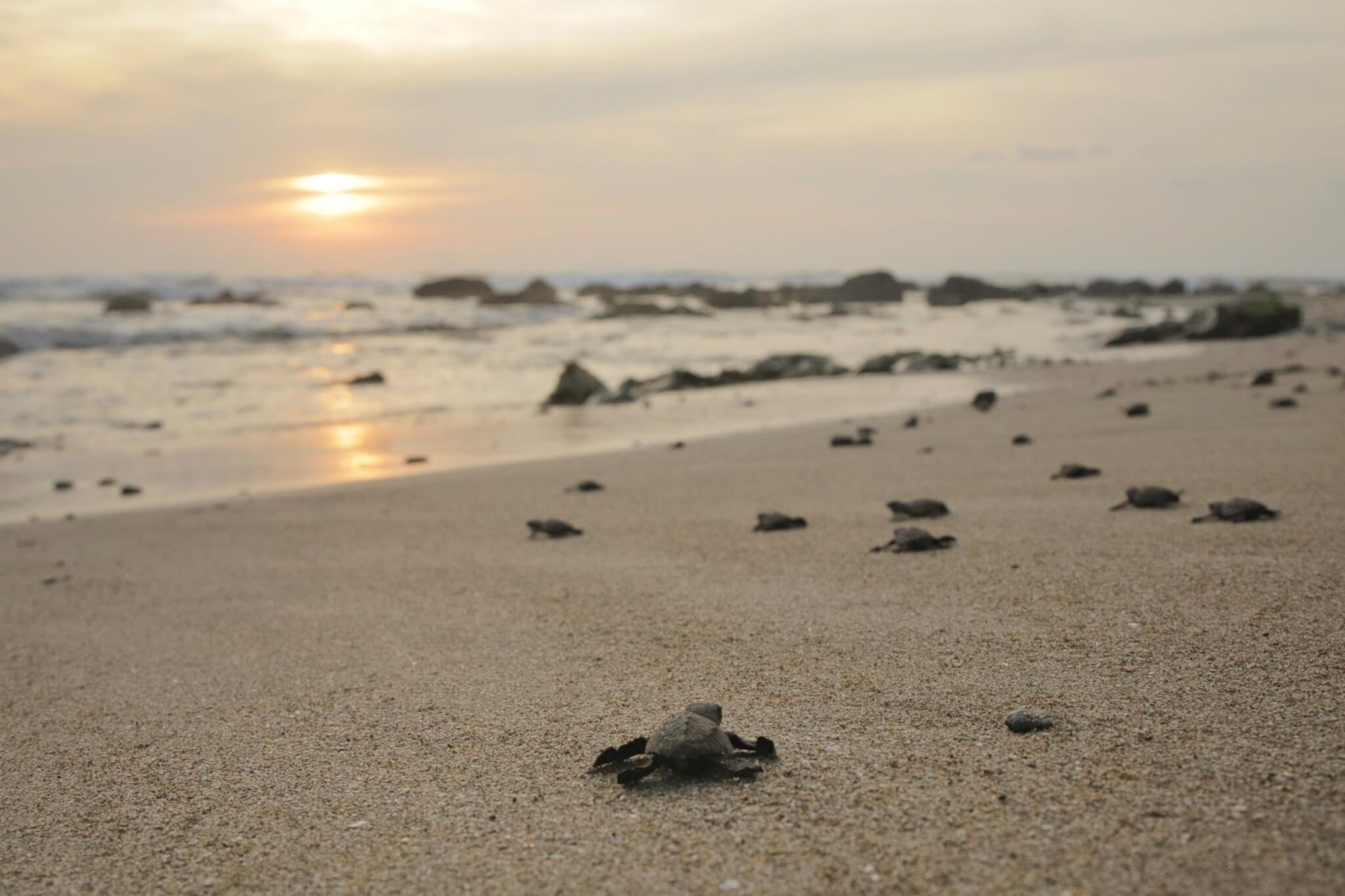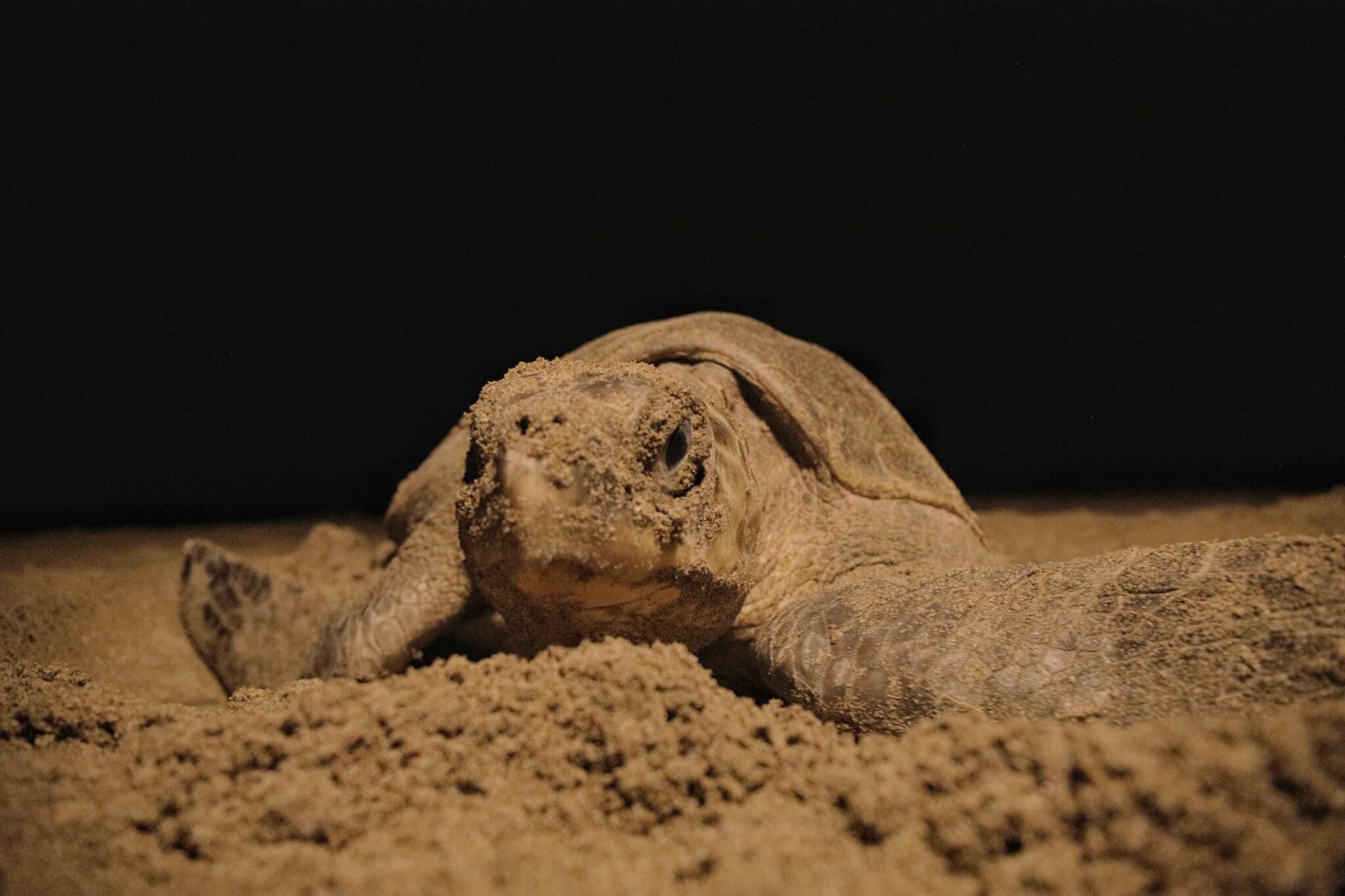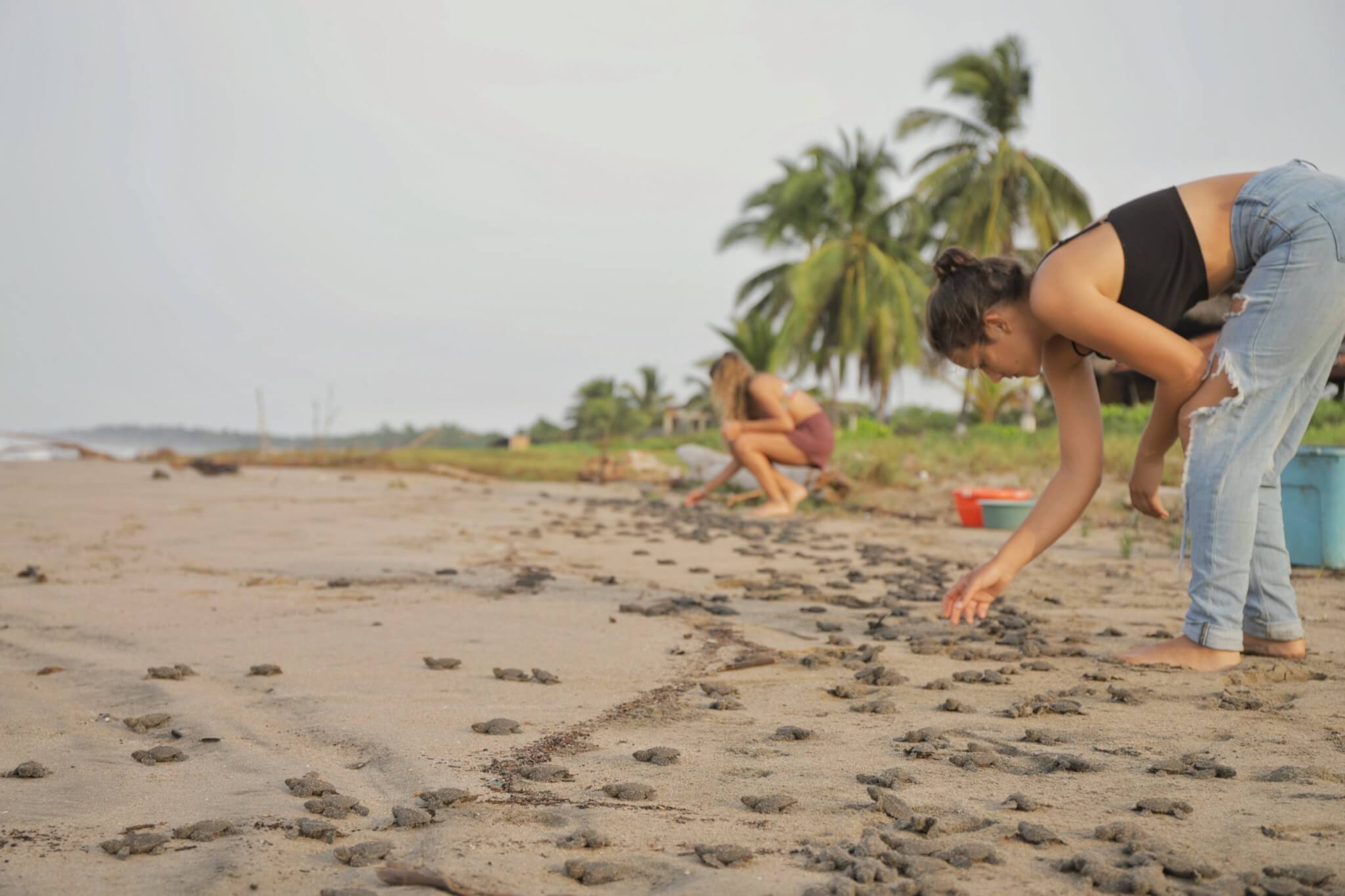Why we rescue sea turtle eggs
You may be wondering why we rescue sea turtle eggs and how that connects to our reforestation efforts. Both the monarch butterfly and the many species of sea turtles found in our oceans are migratory. They are dependent on healthy, accessible habitats in Mexico. Both endangered monarchs and sea turtles need our help. If the sea turtle nests were left on the unprotected beach, many or most of them would be preyed upon by feral dogs and other dogs that roam the beach and have learned to find the nests. Additionally, moving the eggs to a hatchery protects them from beachgoers and vehicle use on the beaches. For these reasons, it is critical to rescue the eggs for transfer to the Majahua Turtle Hatchery.
How we rescue eggs
Sea turtles like to arrive onshore, build their nests, and lay their eggs at night. Our team, a mix of biologists, hatchery staff, and volunteers will monitor the beach to ensure the locations of the nests are found. Most species lay around 100 eggs, which our team collects from the nests and brings back to the hatchery. At the hatchery, nests are dug and the eggs buried. The eggs will incubate for around 44 days before hatching. When the turtles are released, the team and volunteers monitor the beach for predators and unknowing beachgoers -- all of which ensure the best outcome for the sea turtle populations.

Species we rescue:
Leatherback Turtle
 The largest of the sea turtles, the leatherback turtle population native to the Pacific coasts are the most at risk of extinction, with a 90% nesting decline. The leatherback uniquely is the only species of sea turtle that lacks a hard shell and scales and therefore gets its name for its tough, rubbery skin. It's believed that they have existed in their current form since the age of dinosaurs (how cool!). These beautiful creatures were once abundant everywhere, but the population is rapidly declining, with 40% of the loss happening over the last three generations of sea turtles. Leatherback turtles can live to be around 50 years old and grow to be five to six feet, weighing in at 750-1,000 pounds!
The largest of the sea turtles, the leatherback turtle population native to the Pacific coasts are the most at risk of extinction, with a 90% nesting decline. The leatherback uniquely is the only species of sea turtle that lacks a hard shell and scales and therefore gets its name for its tough, rubbery skin. It's believed that they have existed in their current form since the age of dinosaurs (how cool!). These beautiful creatures were once abundant everywhere, but the population is rapidly declining, with 40% of the loss happening over the last three generations of sea turtles. Leatherback turtles can live to be around 50 years old and grow to be five to six feet, weighing in at 750-1,000 pounds!
Hawksbill Turtle
 Named for its unique beak-like mouth, the Hawksbill turtle is the only sea turtle species that can survive mainly on a diet of sponges. The shape of its mouth helps the species reach cracks, crevices, and hard-to-reach areas of reefs, where sponges are found. This species has an equally unique set of threats facing it. In addition to the threats all sea turtles face, Hawksbill turtles are often hunted for their beautiful shells and the bleaching of the world's reefs threatens its main source of food. While they can be found in all of the major oceans, they are endangered. Weighing around 100 to 150 pounds, they grow between two to four feet and live to be around age 50.
Named for its unique beak-like mouth, the Hawksbill turtle is the only sea turtle species that can survive mainly on a diet of sponges. The shape of its mouth helps the species reach cracks, crevices, and hard-to-reach areas of reefs, where sponges are found. This species has an equally unique set of threats facing it. In addition to the threats all sea turtles face, Hawksbill turtles are often hunted for their beautiful shells and the bleaching of the world's reefs threatens its main source of food. While they can be found in all of the major oceans, they are endangered. Weighing around 100 to 150 pounds, they grow between two to four feet and live to be around age 50.
Black Turtle
 The lesser-known black turtle, related to the green turtle, can be found between Mexico and Peru. It spends most of its time in bays and estuaries, and the coloring of its shell often protects it from prey. However, this makes it more susceptible to vessel collisions and entanglement in fishing nets. Black turtles are herbivores and survive by mainly eating marine algae.
The lesser-known black turtle, related to the green turtle, can be found between Mexico and Peru. It spends most of its time in bays and estuaries, and the coloring of its shell often protects it from prey. However, this makes it more susceptible to vessel collisions and entanglement in fishing nets. Black turtles are herbivores and survive by mainly eating marine algae.
Olive Ridley Turtle
 Named for its olive green color and heart-shaped shell, the Olive Ridley sea turtle is endangered, with an overall 30-50% reduction in the global population size. It's considered one of the smallest sea turtle species, weighing up to 100 pounds and growing no more than two and a half feet in size. Like the Black turtle, the heat of the sand determines the gender of the eggs within the nests. The breeding colonies on the Pacific coast of Mexico are currently the most threatened population.
Named for its olive green color and heart-shaped shell, the Olive Ridley sea turtle is endangered, with an overall 30-50% reduction in the global population size. It's considered one of the smallest sea turtle species, weighing up to 100 pounds and growing no more than two and a half feet in size. Like the Black turtle, the heat of the sand determines the gender of the eggs within the nests. The breeding colonies on the Pacific coast of Mexico are currently the most threatened population.

Threats to sea turtles
- By-catch in fishing gear
- Climate Change
- Direct harvest & hunting
- Loss & degradation of the nesting and foraging habitat
- Pollution
- Predation of eggs & hatchlings










